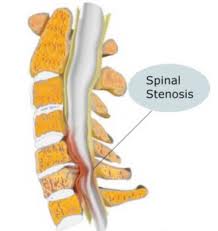[su_divider top=”no” style=”double” divider_color=”#952524″ link_color=”#952524″ size=”2″ margin=”10″]
What is spinal stenosis? What causes this problem? What are the signs and symptoms? How can homeopathy help you? All of this and more answered, in this post and of course our doctors always there to help you. Just fill in your details in the form down below and we will answer all your questions for FREE!
[su_divider top=”no” style=”double” divider_color=”#952524″ link_color=”#952524″ size=”2″ margin=”10″]
[sc name=”query”]

What is spinal stenosis?
Spinal stenosis is a condition of lower back and neck.
It is defined as the decrease in space of the spinal canal passage that is the narrowing of the passage from where spinal nerves pass.
Which age group is more affected?
The lumbar stenosis mainly affects the age of 30 to 70 years peoples.
The cervical stenosis usually affects at the age of 40-60 years.
Both females and males are equally affected both the condition.
How do you know you are suffering from spinal stenosis?
• Chronic pain in back in case of lumbar stenosis.
• Neck pain along with that pain in arms.
• Neck stiffness in case of cervical spondylosis.
• Weakness
• Midline back pain.
• In case of injury to urinary bladder and rectum can produce associated symptoms like:
involuntary urination,
the frequency of urine,
involuntary passage of stool.
lower extremity weakness.
• Numbness in hand, arm, foot or leg.
• Tingling in a hand, arm, foot or leg.
• Difficulty in standing and sitting.
• Painful stretching of the back.
What are the types of Spinal stenosis?
There are two types of spinal stenosis:
Cervical stenosis.
In this condition, the narrowing occurs in the part of the spine in the neck.
Lumbar stenosis.
In this condition, the narrowing occurs in the part of the spine in the lower back.
It is the most common form of spinal stenosis.
What are the causes of spinal stenosis?
Primary stenosis is uncommon occurring only in few patients.
Causes of primary stenosis are as follows:
• Genetic defects of vertebral canal.
This includes congenital malformations that are as follows:
-Osteopetrosis(it is the inherited disorder which results the bones harden, becoming denser, in contrast to more prevalent conditions like osteoporosis)
-Achondroplasia(it is the condition of bone in which bone growth disorder that causes disproportionate dwarfism)
-Spinal dysraphism (incomplete vertebral arch closure).
-Anterior vertebral breaking (Morquio syndrome).
-Early vertebral arch ossification.
The secondary stenosis occurs due to any underlying disease.
The causes for secondary stenosis are usually due to degenerative changes in certain diseases and the diseases are as follows:
• Pagets disease.
• Acromegaly.
• Fluorosis.
• Neoplasm.
• Ankylosing spondylitis.
• Tumor infiltration.
• Metastatic diseases of spine.
• An abscess in vertebral canal leads to compression of spinal cord.
• Some skeletal diseases also lead to spinal stenosis. These are:
-Ankylosing spondylitis.
-Rheumatoid arthritis.
Is Spinal stenosis a serious condition?
Yes, in some cases it may become serious condition. In case of cervical spinal stenosis is rare condition and more sever condition than lumbar spinal stenosis.
The severity of the case depends upon person to person due to susceptibility of the patient.
Some of the patients do not feel any effects of the narrowing, but as part of the aging process, most people will eventually notice:
-radiating pain,
-weakness,
-numbness secondary to the compression of the nerves or spinal cord.
How do you detect spinal stenosis?
• History of the patient.
• Family history.
• Physical examination of the patient.
• X-ray back lumbar and cervical region.
• CT scans of vertebral column the one which is affected cervical or lumbar.
• MRI of vertebral column.
What are the complications of spinal stenosis?
In cases of lumbar stenosis complications are:
• Disability can occur in severe cases.
• Intractable axial pain.
• Weakness and numbness in lower extremity.
• Cauda equine syndrome.
Complications after surgery:
• Hematoma of epidural space.
• Pulmonary embolism.
• Progressive spinal deformity.
• Ridiculer and sustained axial pain is present.
• Leakage of CSF (Cerebro spinal fluid).
How to treat the spinal stenosis?
• Analgesics can help to relieve pain for some time.
• In chronic cases long term monitoring is very important.
• Physical therapy is one of the ways to relieve the pain of the patient.
• Surgical intervention is done in severe cases.
• Lumbar decompressive surgery.
• Epidural steroid injections.
What are the differential diagnosis of spinal stenosis?
• Myofascial pain
• Mechanical low back pain
• Spondylodiskitis
• Spondylolisthesis
• Osteoarthritis
• Lumbar facet arthropathy
• Lumbar spondylolysis and spondylolisthesis
• Lumbar compression fracture.
• Lumbar degenerative disk disease.
• Rheumatoid arthritis
What activities should be avoided with spinal stenosis?
• Avoid stretching in a standing position and extension stretches.
• Instead, try stretching while laying down.
• Avoid doing free weights.
• Avoid running and similar high-impact exercises.
Can homeopathy help in spinal stenosis?
Yes, homeopathy can help symptomatically in this case. Some of the homeopathic medicines which can help in this case. These are:
• CAL FLOUR
• SILICEA
• ZINCUM METALLICUM
• COCCULUS INDICUS
• RHUX TOX
For more information, you can visit MayoClinic and VeryWellHealth.
Spinal Stenosis
[su_divider divider_color=”#952524″ link_color=”#952524″ size=”2″ margin=”10″]
[sc name=”know-your-doctor”]
[sc name=”more-links-diseases”]

